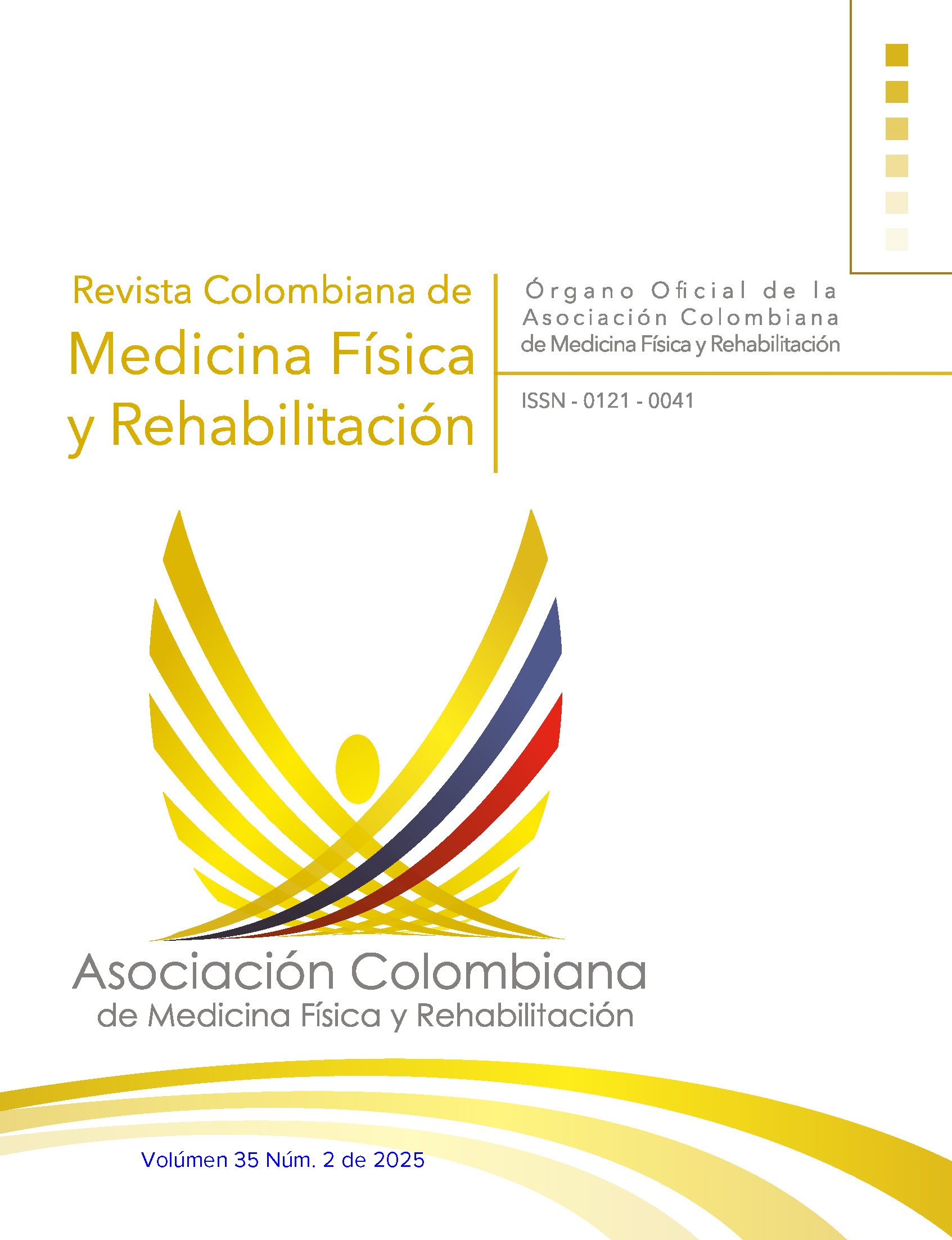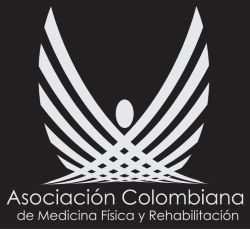Factors related to adherence to exercise during Phase III of a cardiac rehabilitation program implemented in patients with heart failure
DOI:
https://doi.org/10.28957/rcmfr.509Keywords:
reatment adherence and compliance, exercise, ociodemographic factorsAbstract
Introduction. Cardiac rehabilitation is recognized by the clinical practice guidelines, both international and Colombian, as an essential component in the management of heart failure since it improves the functional capacity and quality of life of patients with this condition. However, exercise adherence in this population is low.
Objective. To assess sociodemographic and clinical factors related to self-reported exercise adherence during phase III of the Cardiac Rehabilitation Program.
Methods. Longitudinal cohort study nested in the project "Effectiveness of a phase III cardiac rehabilitation program in patients with heart failure". The study population consisted of patients with heart failure enrolled in the phase III of a cardiac rehabilitation program at a clinic in Medellín, Colombia. A 12 month follow-up was conducted, during which self-reported exercise adherence, defined as the performance of more than 150 minutes per week of unsupervised physical activity, was measured. Sociodemographic and clinical factors were analyzed, for which the following instruments were used: the Duke Activity Status Index (DASI), the Minnesota Living with Heart Failure Questionnaire (MLHFQ), the Patient Health Questionnaire-9 (PHQ-9) for depression, and the State Anxiety Scale (STAI-E) and Trait Anxiety Scale (STAI-R) for anxiety.
Results. A total of 117 patients who met the inclusion criteria were included, of whom 59.8% showed adherence to exercise (>150 minutes per week), being higher in the intervention group, but without a significant difference compared to the control group. The male gender and the total score on the MLHFQ questionnaire were significantly associated with exercise adherence. Men were significantly more likely to adhere to exercise compared to women (OR=2.38, 95% CI: 1.03-5.50; p=0.04), as was having a better quality of life (OR=0.92, 95%CI: 0.87-0.97; p=0.00).
Conclusion. The results of the present study show that the patients who are most likely to adhere to a phase III cardiac rehabilitation program or unsupervised exercise are men and those who have a better quality of life. The rest of sociodemographic and clinical variables did not show a statistically significant association.
References
Gómez-Mesa JE, Saldarriaga C, Jurado AM, Mariño A, Rivera A, Herrera Á, et al. Consenso colombiano de falla cardíaca avanzada: capítulo de Falla Cardíaca, Trasplante Cardíaco e Hipertensión Pulmonar de la Sociedad Colombiana de Cardiología y Cirugía Cardiovascular. Rev Colomb Cardiol. 2019;26(2):3-24. Disponible en: https://doi.org/10.1016/j.rccar.2019.06.001.
López-Castro J, Cid-Conde L, Fernández-Rodríguez V, Failde-Garrido JM, Almazán-Ortega R. Análisis de la calidad de vida en pacientes con insuficiencia cardíaca mediante el cuestionario genérico SF-36. Rev Calid Asist. 2013;28(6):355-60. Disponible en: https://doi.org/10.1016/j.cali.2013.05.008.
Khan MS, Shahid I, Bennis A, Rakisheva A, Metra M, Butler J. Global epidemiology of heart failure. Nat Rev Cardiol. 2024;21(10):717-34. Disponible en: https://doi.org/10.1038/s41569-024-01046-6.
Bozkurt B, Ahmad T, Alexander KM, Baker WL, Bosak K, Breathett K, et al. Heart failure epidemiology and outcomes statistics: A report of the heart failure society of America. J Card Fail. 2023;29(10):1412-51. Disponible en: http://dx.doi.org/10.1016/j.cardfail.2023.07.006.
Rivera-Toquica A, Saldarriaga-Giraldo CI, Echeverría EL, Buitrago A, Mariño A, Arias-Barrera CA, et al. Actualización 2022 del Consenso Colombiano de Insuficiencia Cardíaca con Fracción de Eyección Reducida: Capítulo de Falla Cardíaca, Trasplante Cardíaco e Hipertensión Pulmonar de la Asociación Sociedad Colombiana de Cardiología y Cirugía Cardiovascula [Internet]. Rev Colomb Cardiol. 2022 [citado septiembre 4 de 2025];29(Supl 2):1-19. Disponible en: https://www.rccardiologia.com/portadas/rcc_22_29_supl-2.pdf.
Zubieta-Rodríguez R, Gómez-Valencia AM, Caro-Angulo MP, Bolívar-Moreno LM, Jiménez-Cardozo HA. Caracterización clínica y epidemiológica de pacientes con falla cardiaca aguda. Rev Colomb Cardiol. 2024;31(3):143-51. Disponible en: http://dx.doi.org/10.24875/rccar.23000037.
Heidenreich PA, Bozkurt B, Aguilar D, Allen LA, Byun JJ, Colvin MM, et al. 2022 AHA/ACC/HFSA guideline for the Management of Heart Failure: A report of the American College of Cardiology/American Heart Association joint committee on clinical practice guidelines. Circulation. 2022;145(18):e895-1032. Disponible en: http://dx.doi.org/10.1161/CIR.0000000000001063.
Visseren FLJ, Mach F, Smulders YM, Carballo D, Koskinas KC, Bäck M, et al. 2021 ESC Guidelines on cardiovascular disease prevention in clinical practice. Eur Heart J. 2021;42(34):3227-337. Disponible en: http://dx.doi.org/10.1093/eurheartj/ehab484.
Lugo-Agudelo LH, Ortiz SD, Rangel AM, Ospina A, Sénior JM. Guía de práctica clínica para la prevención, el diagnóstico, el tratamiento y la rehabilitación de la falla cardiaca en población mayor de 18 años, clasificación B, C y D. Componente de rehabilitación cardiaca. Rev Colomb Cardiol. 2019;26(6):357-68. Disponible en: http://dx.doi.org/10.1016/j.rccar.2018.10.015.
Lamotte M. Entrenamiento físico en la rehabilitación cardíaca. EMC - Kinesiterapia - Med Fís. 2020;41(1):1-14. Disponible en: http://dx.doi.org/10.1016/s1293-2965(19)43288-x.
Patti A, Merlo L, Ambrosetti M, Sarto P. Exercise-based cardiac rehabilitation programs in heart failure patients. Heart Fail Clin. 2021;17(2):263-71. Disponible en: http://dx.doi.org/10.1016/j.hfc.2021.01.007.
González-Gallarza RD, Arranz-Rodríguez H, Castro-Conde A. Adherencia al ejercicio tras rehabilitación cardiaca, ¿un objetivo alcanzable? REC: CardioClinics. 2020;55(2):59-61. Disponible en: http://dx.doi.org/10.1016/j.rccl.2020.01.003.
Orozco-Beltrán D, Carratalá-Munuera C, Gil-Guillén V. Mejorar la adherencia: una de las acciones más eficientes para aumentar la supervivencia de los pacientes en prevención secundaria. Rev Esp Cardiol Supl. 2015;15(S5):12-8. Disponible en: http://dx.doi.org/10.1016/s1131-3587(16)30004-8.
Zhong W, Fu C, Xu L, Sun X, Wang S, He C, et al. Effects of home-based cardiac telerehabilitation programs in patients undergoing percutaneous coronary intervention: a systematic review and meta-analysis. BMC Cardiovasc Disord. 2023;23(1):101. Disponible en: http://dx.doi.org/10.1186/s12872-023-03120-2.
Gutiérrez-Medina N. Análisis de la adhesión a la fase III de un programa de rehabilitación cardiaca: factores influyentes [Tesis de doctorado]. Las Palmas: Universidad de Las Palmas de Gran Canaria; 2016 [citado septiembre 4 de 2015]. Disponible en: https://accedacris.ulpgc.es/bitstream/10553/19294/4/0712181_00000_0000.pdf.
Jegier A, Szalewska D, Mawlichanów A, Bednarczyk T, Eysymontt Z, Gałaszek M, et al. Comprehensive cardiac rehabilitation as the keystone in the secondary prevention of cardiovascular disease. Kardiol Pol. 2021;79(7-8):901-16. Disponible en: http://dx.doi.org/10.33963/KP.a2021.0066.
Warehime S, Dinkel D, Alonso W, Pozehl B. Long-term exercise adherence in patients with heart failure: A qualitative study. Heart Lung. 2020;49(6):696-701. Disponible en: http://dx.doi.org/10.1016/j.hrtlng.2020.08.016.
O’Connor CM, Whellan DJ, Lee KL, Keteyian SJ, Cooper LS, Ellis SJ, et al. Efficacy and safety of exercise training in patients with chronic heart failure: HF-ACTION randomized controlled trial. JAMA. 2009;301(14):1439-50. Disponible en: http://dx.doi.org/10.1001/jama.2009.454.
Alonso WW, Kupzyk KA, Norman JF, Lundgren SW, Fisher A, Lindsey ML, et al. The HEART Camp exercise intervention improves exercise adherence, physical function, and patient-reported outcomes in adults with preserved ejection fraction heart failure. J Card Fail. 2022;28(3):431-42. Disponible en: http://dx.doi.org/10.1016/j.cardfail.2021.09.003.
McKelvie RS, Teo KK, Roberts R, McCartney N, Humen D, Montague T, et al. Effects of exercise training in patients with heart failure: the Exercise Rehabilitation Trial (EXERT). Am Heart J. 2002;144(1):23-30. Disponible en: http://dx.doi.org/10.1067/mhj.2002.123310.
Virani SS, Alonso A, Benjamin EJ, Bittencourt MS, Callaway CW, Carson AP, et al. Heart disease and stroke statistics—2020 update: A report from the American Heart Association. Circulation. 2020;141(9):e139-e596. Disponible en: http://dx.doi.org/10.1161/cir.0000000000000757.
Moore SM, Ruland CM, Pashkow FJ, Blackburn GG. Women’s Patterns of Exercise Following Cardiac Rehabilitation. Nursing Research. 1998;47(6):318-24. Disponible en: https://doi.org/10.1097/00006199-199811000-00005.
Conraads VM, Deaton C, Piotrowicz E, Santaularia N, Tierney S, Piepoli MF, et al. Adherence of heart failure patients to exercise: barriers and possible solutions: a position statement of the Study Group on Exercise Training in Heart Failure of the Heart Failure Association of the European Society of Cardiology: A position statement of the Study Group on Exercise Training in Heart Failure of the Heart Failure Association of the European Society of Cardiology. Eur J Heart Fail. 2012;14(5):451-8. Disponible en: http://dx.doi.org/10.1093/eurjhf/fs048.
Ozemek C, Lavie CJ, Kaminsky LA. Review of recent cardiac rehabilitation research related to enrollment/adherence, mental health, and other populations. J Cardiopulm Rehabil Prev. 2021;41(5):302-7. Disponible en: http://dx.doi.org/10.1097/hcr.0000000000000649.
Betancourt-Peña J, Portela-Pino I, Amaral-Figueroa M. Factors related to non-adherence to cardiac rehabilitation in patients with heart failure. Rev Clin Esp (Barc). 2024;224(1):24-33. Disponible en: http://dx.doi.org/10.1016/j.rceng.2023.12.010.
Bozkurt B, Fonarow GC, Goldberg LR, Guglin M, Josephson RA, Forman DE, et al. Cardiac rehabilitation for patients with heart failure: JACC expert panel. J Am Coll Cardiol. 2021;77(11):1454-69. Disponible en: http://dx.doi.org/10.1016/j.jacc.2021.01.030.
Menezes AR, Lavie CJ, DeSchutter A, Milani RV. Gender, race and cardiac rehabilitation in the United States: is there a difference in care? Am J Med Sci. 2014;348(2):146-52. Disponible en: http://dx.doi.org/10.1097/MAJ.0000000000000306.
Endo N, Goto A, Suzuki T, Matsuda S, Yasumura S. Factors associated with enrollment and adherence in outpatient cardiac rehabilitation in Japan. J Cardiopulm Rehabil Prev. 2015;35(3):186-92. Disponible en: http://dx.doi.org/10.1097/HCR.0000000000000103.
Lugo-Agudelo LH, Ortiz-Rangel SD, Rodríguez-Guevara C, Vargas-Montoya DM, Aguirre-Acevedo DC, Vera-Giraldo CY, et al. Validación del Minnesota Living with Heart Failure questionnaire (MLFHQ) en pacientes con falla cardíaca en Colombia. Rev Colomb Cardiol. 2020;27(6):564-72. Disponible en: http://dx.doi.org/10.1016/j.rccar.2019.04.003.
Tamayo-Lopera DC, Posada-Borrero AM, Mesa-Franco LF, Lugo-Agudelo LH. Intervenciones no farmacológicas para la depresión en pacientes con falla cardíaca: una revisión sistemática. Rev Colomb Cardiol. 2023;30(4):171-9. Disponible en: http://dx.doi.org/10.24875/rccar.22000093.
31. Deka P, Salahshurian E, Ng T, Buchholz SW, Klompstra L, Alonso W. Use of mHealth technology for improving exercise adherence in patients with heart failure: Systematic review. J Med Internet Res. 2025;27:e54524. Disponible en: http://dx.doi.org/10.2196/54524.
World Medical Association (WMA). WMA Declaration of Helsinki – Ethical principles for medical research involving human participants [Internet]. Helsinki: 75th WMA General Assembly; 2024 [citado septiembre 4 de 2025]. Disponible en: https://www.wma.net/es/policies-post/declaracion-de-helsin-ki-de-la-amm-principios-eticos-para-las-investigaciones-medicas-en-seres-humanos/.
Colombia. Ministerio de Salud. Resolución 8430 de 1993 (octubre 4): Por la cual se establecen las normas científicas, técnicas y administrativas para la investigación en salud [Internet]. Bogotá D.C.; octubre 4 de 1993 [citado septiembre 4 de 2025]. Disponible en: https://www.minsalud.gov.co/sites/rid/lists/bibliotecadigital/ride/de/dij/resolucion-8430-de-1993.pdf.
How to Cite
Downloads
Downloads
Published
Issue
Section
License
Copyright (c) 2025 Revista Colombiana de Medicina Física y Rehabilitación

This work is licensed under a Creative Commons Attribution-NonCommercial-NoDerivatives 4.0 International License.

| Article metrics | |
|---|---|
| Abstract views | |
| Galley vies | |
| PDF Views | |
| HTML views | |
| Other views | |


